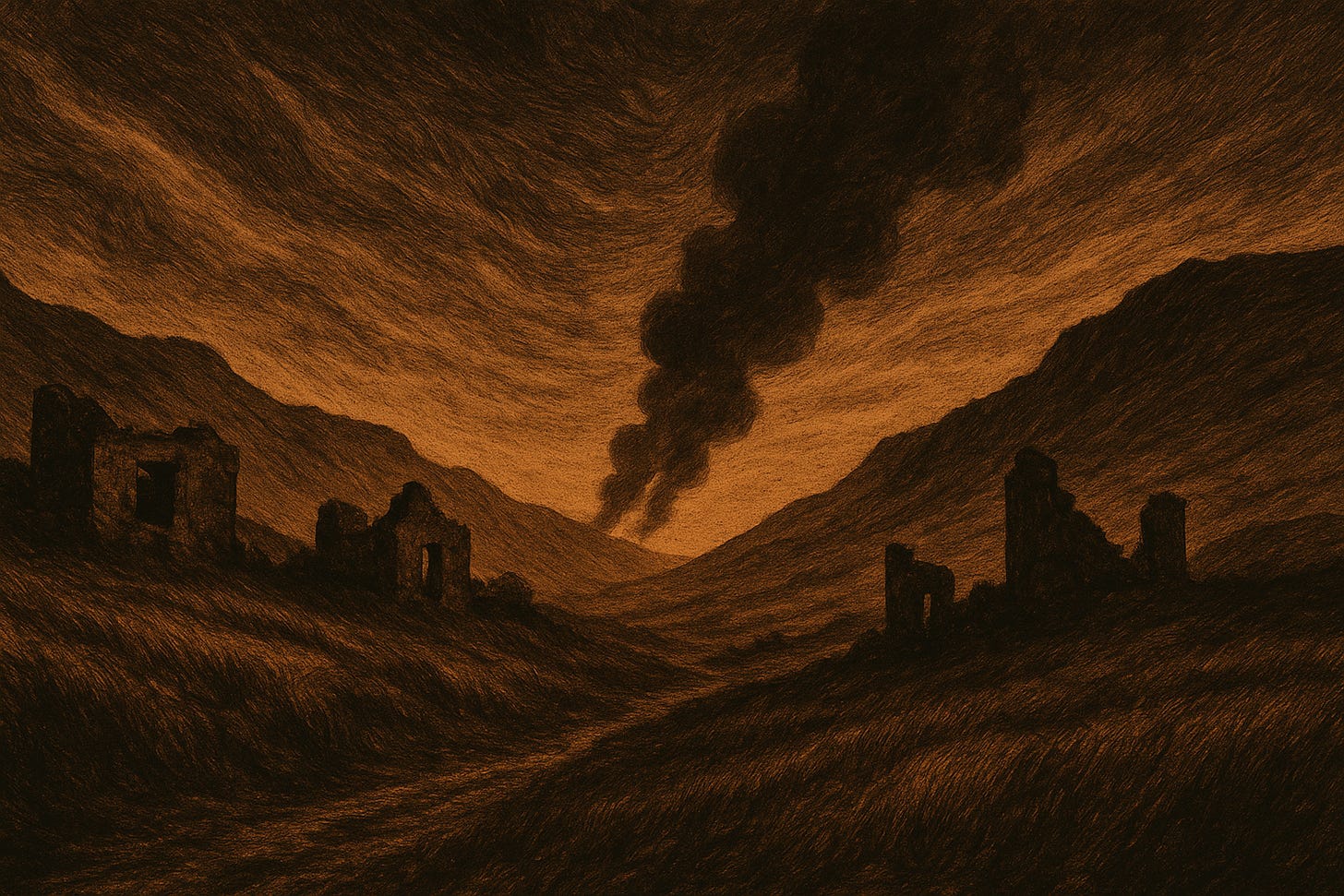Atrocity
A fragment on the chorus of screams, the silence of stone and what bleeds into the future.
Atrocity does not resolve. It can never balance. Never rectifies. It only coils the field into another cycle: Twisting it tight, like a spiral within a spiral, arming the future for further atrocity. We are taught to think of atrocity as event— a singular violation. A delineated anomaly to be named, condemned, and outlived. But it is the pulse that reveals the wound. It bleeds— blood becomes the rule. The rule becomes a frame. And the frame forgets— it was once wrapped around a chorus of screams. Atrocity is the growth of a rotten rootwork hidden in ensanguinated soil. Thick with fear, slick with hatred, soaked in sedimented tears, and threaded through bone and bodies lost beneath the violence. Its shape is unmistakable. It speaks a language every witness knows. It is felt in the marrow at any distance, from any time. In the logic of the perpetrator naming is resistance and remembering is radical. Power built on atrocity requires that history forgets. And those who spill blood will also spill ink, and then more blood— Pen and sword both, directed at those who record. Those who report. Those who remind. Buried beneath justifications. Draped in flags. Sanitized with silence. Threatened into absence. Atrocity may end in quiet but something in the rubble remembers. The ruins do not forget their stains.

